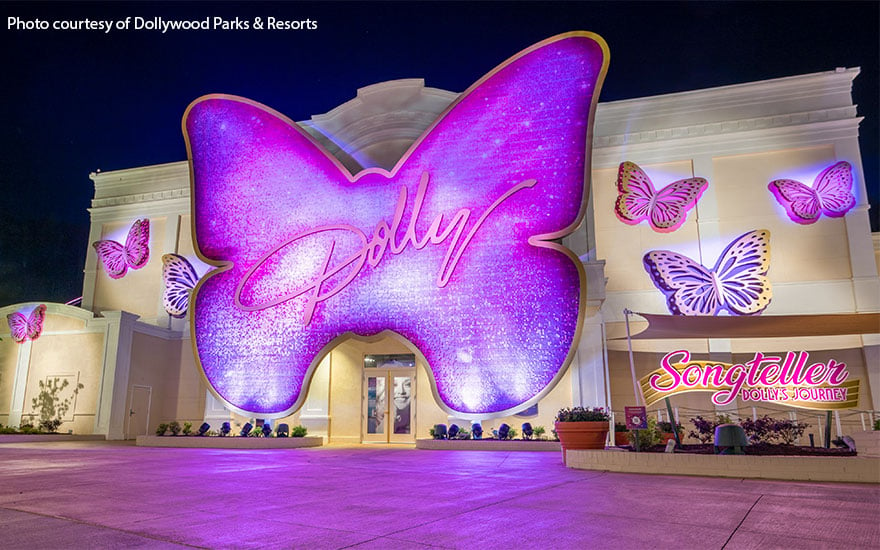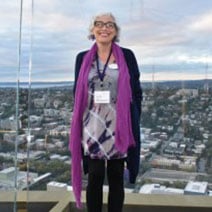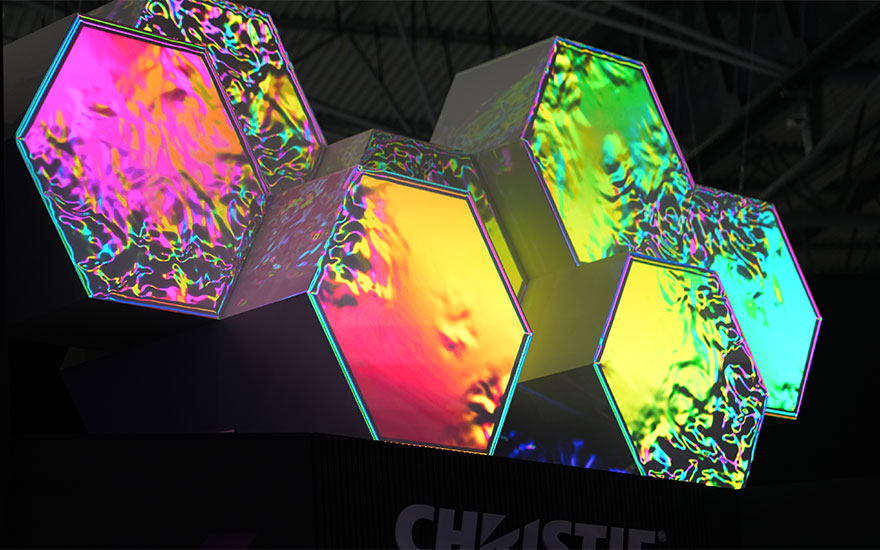Technologies converge to tell the story of a cultural icon inside the Dolly Parton Experience
This article was republished with permission from InPark Magazine.
A large, colorful butterfly marks the portal to Songteller, a multifaceted walkthrough museum exploring Dolly Parton’s life, work and career. Songteller is one of three facilities that make up the new Dolly Parton Experience at Dollywood park in Pigeon Forge, Tennessee.
Located near the park entrance and open since May 2024, the Dolly Parton Experience, one of the theme park’s 11 themed zones, is a reimagining of the former “Adventures in Imagination” area. Guests pass through a series of rooms with exhibits presenting costumes, posters, artifacts, and other objects. A highlight of the walkthrough museum is a six-minute, state-of-the-art, 360-degree multimedia encounter in a customized 40’ x 40’ x 20’ space. Guests are immersed and enveloped in a digital projection-mapped, curated montage of historic clips and images. The seamless integration of cutting-edge lighting, audio, and video elements creates a dynamic environment to engage the audience at every moment of the playback.
“…RGB technology…provides about 100% more color volume than laser phosphor projectors can produce. In a side-by-side demo, there’s a real difference that even a novice can see.” - Larry Howard, vice president of business development, Quince Imaging.
Quince Imaging was contracted directly by Dollywood Parks & Resorts operator Herschend Family Entertainment (HFE) to provide AV technology and services to create this immersive space. Quince Imaging’s services included technical design and integration. The key technology specified was state-of-the-art RGB pure laser projection supporting the Rec. 2020 expanded color gamut, in the form of five Christie M 4K25 RGB projectors. After evaluating it against other options, the client approved the Christie product in a projector shootout at Quince Imaging’s studio.
Larry Howard, Vice President of Business Development at Quince Imaging, said, “The RGB technology is one of the biggest advancements in projector technology in quite a while. It provides about 100% more color volume than laser phosphor projectors can produce. In a side-by-side demo, there’s a real difference that even a novice can see.”
That difference is the Rec. 2020 color space – as opposed to Rec. 709 (HDTV) and DCI-P3 (the standard for cinema). Rec. 2020 is touted for enabling precise color matching, realistic skin tones, and – in general – dramatically expanding the range of what’s possible in media production. It is a key feature of what makes Christie’s RGB pure laser technology highly competitive, disruptive, and enthusiastically received. Having more colors also means it’s possible to reproduce exact brand or IP character colors.
“This room in the Dolly Parton Experience is all about immersion, and the more color we have available, the more real everything looks,” said Howard. “Facial tones, scenic environments, the hills of Tennessee, fall shots with leaves – most importantly, we could show Dolly looking her very best.”
Color gamuts, Rec. 2020 and RGB laser

RGB pure laser projection technology uses individual red, green, and blue laser diodes to create pure colors. The Rec. 709 color gamut is the most-used standard today. It defines picture characteristics as having an aspect ratio of 16:9, 1080 active lines per picture, 1920 samples per line, and a square pixel aspect ratio. Rec. 709 was developed for camera encoding and signal characteristics of high-definition television (HDTV).
With a larger color gamut than Rec. 709, DCI-P3 is the standard for mainstream cinema. It has more greens and reds than the Rec. 709 color space, which enables cinema projectors to reproduce more realistic and lifelike colors on- screen.
In 2012, the International Telecommunication Union (ITU) published ITU-R Recommendation BT.2020 (Rec. 2020) for ultra-high-definition television (UHDTV). This recommendation covers various image parameters, including definitions for resolution, frame rates, bit depths, and color space.
The Rec. 2020 recommendation addresses an expanded color gamut. The development of this gamut helped capture real- world colors in a 3-primary system. The standards committee for Rec. 2020 chose color primary coordinates at the extreme edge of the visible color space.
As the only projection technology that can reach 98% of Rec. 2020, RGB pure laser blows open the color palette and gives creatives free rein to bring a vision to life. Rec. 2020 produces 75.8% of all the colors the human eye can see in comparison to DCI-P3’s 53.6% and Rec. 709’s 35.9%.
In other words, Rec. 2020 offers more than twice the color of Rec. 709 and 41% more than DCI-P3. More lifelike colors make the audience experience more immersive, helping creatives and filmmakers tell their stories and bring their visions to life.
Are you looking for more information on the Rec. 2020 color gamut?
Check out our white paper, Realizing real-world color with Rec. 2020.
Quince and the Christie M 4K RGB Series
In addition to permanent installations, Quince is active in the live events business, with a sizable in-house supply of AV equipment from various manufacturers. This enabled them to readily organize the projector shootout on their soundstage in Sterling, Virginia. “Various models, including laser phosphor and RGB projectors, were set up, allowing the HFE and Dollywood teams to assess each model’s performance, comparing capabilities, image quality, brightness levels, and color reproduction,” said Howard. Those present at the shootout included HFE’s Joel House (Project Manager, HFE Creative Studios) and Stephen Byrne (Technical Operations Specialist), as well as Cyndi McCormack (Vice President, Guest Experience at Dollywood Parks & Resorts).
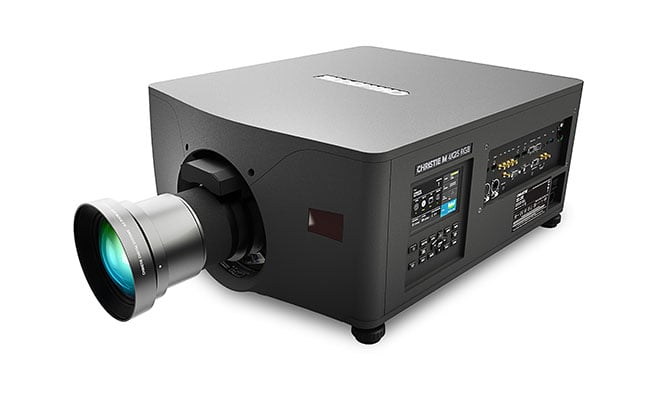
In addition to color accuracy, Christie RGB projectors are known for their ability to interface readily with the other system components and deliver the brightness and resolution, ease of installation, small form factor, quiet operation, longevity, and low maintenance requirements that benefit a project like the Dolly Parton Experience.
“The Christie M 4K25 RGB is the lightest and most compact RGB pure laser projector in the market today,” said Ernest Bakenie, Senior Director of Sales, Themed Entertainment at Christie.
The previous M Series was a lamp-based workhorse, popular and widely installed in its day. The new M 4K RGB Series – which includes the M 4K25 RGB now running in the Dolly Parton Experience – was designed to simplify upgrades from one to the other. It uses the same lenses as its predecessor and conforms to the existing installation space. It also delivers all the modern features and built-in software such as Christie® LiteLOC™ (to automatically maintain color balance and brightness over time, regardless of fluctuations in ambient temperature) and Christie Mystique™ (an automated camera-based alignment and recalibration solution for multiple projector installations).
Bakenie also noted the low-brightness mode that the Christie M 4K RGB Series now includes. “The low-brightness mode is ideal for certain attractions, such as dark rides, where Rec. 2020 color performance is needed, but where intense illumination would break the illusion. Conversely, our line of RGB projectors also perform well outdoors as in projection mapping applications,” he said.
More about the system and team
Quince designed and installed a video system with rich color space and an 8.1-channel audio system. Howard reported that each wall was discreetly processed at 4K60 4:4:4 and audio was configured in an 8.1 channel setup. Show control was provided by Q-SYS, as a closed subsystem tied into the parkwide network. Quince provided a single turnkey service spanning immersive audio systems, a high-resolution video system, and rigging and control systems.
Howard said, “The company does extensive business in live events, so Quince and its team members understand what it takes to have the show open on time. We prep for an installation like a live event – we think about everything.”
In addition to the Christie projectors, key products included JBL AM Series speakers, which, paired with Q-SYS Core 110f & CX-Q 4K4, are touted for bringing crystal- clear sound quality to Dolly Parton’s musical narratives; and the Dataton Watchout Version 7 media server to facilitate synchronized, high-resolution media playback. The media producer was Roto. “For any truly immersive environment, full collaboration with the partners designing and supplying the media is critical,” said Howard.
A popular advantage for operators is the versatility potential of media-based systems – the ability to refresh and update them helps keep the presentation relevant and offers something new for returning guests. “Eugene Naughton, [Dollywood Parks & Resorts President], was very keen on their ability to update that system with new media – to enable Dollywood to reflect the scale of the legend Dolly Parton has become and the brand she has built,” said Howard.
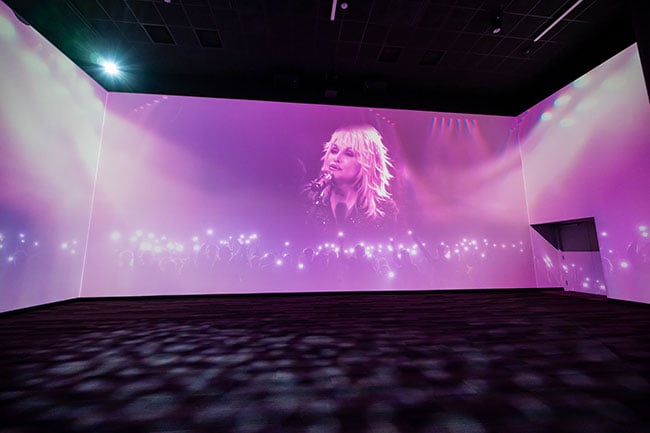
“It allows us to update our story because Dolly Parton is always going to continue to grow,” stated Naughton at the grand opening in May.
Bakenie said, “The projectors can handle whatever content comes in and work with whatever other equipment is in the room. They can make changes on the fly, dial in the specifics of what the creative people want.”
“Everything associated with immersive environments just keeps getting better and more realistic,” said Howard. He noted that a great guest experience also depends on what happens outside the buildings. “At Dollywood, guests go into an immersive dark ride or walkthrough and then emerge into a beautiful park, nestled into the terrain. It’s a great combination; as an industry, we’re seeing more of that kind of placemaking vision. Designers and operators understand that it’s important for an attraction or ride to fit into the environment and that everything should support the narrative and the full experience of the place. You’re not just going into a room for a story – the story is everywhere.”
